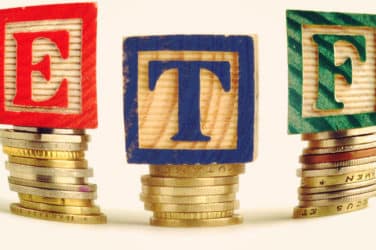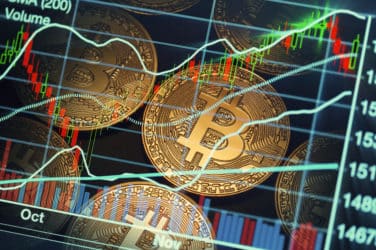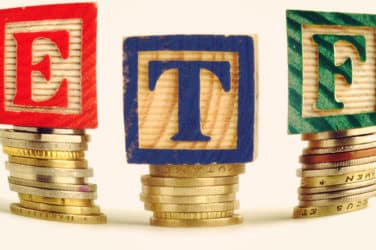Low cost and high liquidity are boosting demand for exchange-traded funds, both for retail and institutional investors.
Like a one-two punch knockout punch, traders are bowled over by the value proposition in ETFs, according to Ryan Sullivan, vice president of Global ETF Fund Services at Brown Brothers Harriman. In a recent interview with Markets Media, Sullivan said that not only are ETFs benefiting from lower costs relative to other securities and high liquidity, but also a shift in asset manager investing.
“As we look at the sector at large, we’re seeing a fundamental shift by asset managers who want to use ETFs as wrappers for active strategies and not just passive ones,” Sullivan said. “Advisors and institutions are looking for low-cost alternatives and getting their heads around using ETFs. In my view, ETFs are a necessary tool for asset managers to have in their tool-box.”
Brown Brothers Harriman does not play the role of an ETF provider, but rather, servicers of these product platforms for asset managers. Sullivan described his role at BBH as providing dedicated coverage of the asset class, focusing on the US and servicing both existing and new issuers – ranging from larger institutions that want to offer ETFs or small start-up companies. He is also responsible for working with these clients to help develop their ETF product and distribution strategies, and optimize their ETF business.
Prior to joining BBH, he worked at Charles Schwab Investment Management (CSIM), most recently as a Product Manager for CSIM’s sub-advised business. He also spent time as a member of CSIM’s Strategy and Product Development team, focused on various strategic initiatives aimed at expanding the product suite and distribution strategy.
“BBH consults and engages with sponsors – either providing them with an ETF 101, or deeper dives on how to design operational workflows, or the role and functions of capital markets desks,” Sullivan said.
At their inception, ETFs were aimed squarely at retail investors who wanted exposure to multiple asset classes but could trade them in exchange fashion. And while ETFs are still heavily used by retail investors or their intermediaries, the products low cost and liquidity has gotten the attention of larger institutional investors. And he has seen it.
“These larger firms are interested as liquidity and cost have become more meaningful to their own portfolios,” he began. “insurance companies getting into this space. Pension funds too have moved beyond dipping their toes into fixed income ETFs, now adding equity ETFs tracking broad indexes to their strategies.
Liquidity Begets Liquidity
As liquidity in ETFs has increased, it has initiated a type of demand pull effect – as demand has increased it has pulled in more issuance. This effect, Sullivan said, has led to the increased issuance and resultant demand.
“And now you increasingly have traditional investors using them as part of a long-term investment strategy,” he said. “With increased liquidity you also have ETFs becoming less of a cash-equitization strategy but more of a traditional buy-and-hold strategy for institutional investors as well.”
According to the latest data from the Investment Company Institute, which tracks net ETF issuance weekly, this appears to support Sullivan’s bullish feelings for the asset class. ICI reported hat the estimated value of all ETF shares issued exceeded that of shares redeemed by $9.40 billion for the week ended August 17. And total estimated inflows to long-term mutual funds and ETFs were $8.27 billion for the week ended August 17. Estimated mutual fund outflows were $1.13 billion while estimated net issuance for ETFs was $9.40 billion.
The Future’s So Bright, I Gotta Wear Shades
BBH’s Sullivan was optimistic over the next six months for ETF space, even in the face of the upcoming US Presidential election and the volatility it can bring.
“Market volatility will affect ETFs – they are not exempt from it – whether it be from elections or unexpected events.” Sullivan said. “The good news is that the industry has taken steps to make sure ETFs and ETPs can weather storms like we saw last August when volatility led the exchanges to invoke certain rules at the open, which led to an unexpected divergence between the value of ETF shares and their underlying holdings. It’s unlikely something like this will happen again”
Sullivan was referring to last August 24 when the ETFs sector experienced a ‘flash crash” were the ETF sector opened lower and was pummeled by banks that were conducting hedge-related sales. This tidal wave of selling pushed the markets even lower and liquidity providers exited the market. The market moved so far so fast that many were unsure off where actual prices were. The contagion spread to some stocks – those underlying the ETFs affected. It took the day to sort through the sell-off – but like the May 2010 equity market ‘flash crash’ – many in market were paralyzed as the exchanges struggled to re-open following their own unique procedures.
“We are now seeing some harmonized proposals coming from the exchanges and the creation of uniform standards between them which will help the sector in times of stress,” Sullivan added. “We’re moving in the right direction in this regard.”
As for the remainder of the year, Sullivan told Markets Media that ETFs as wrappers will continue to have more inflows than outflows, as well as continued institutional investor demand.
“As active performance remains mixed and buyers of investment products continue to favor low-cost products like ETFs, we should continue to see demand for ETFs as a product wrapper.”
More on Trading
- The Time is Ripe for Equity Market Auctions
- IEX Debuts Exchange Trading
- WisdomTree Plans Addition to Dynamic Hedge Family





